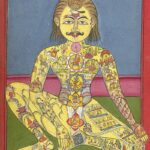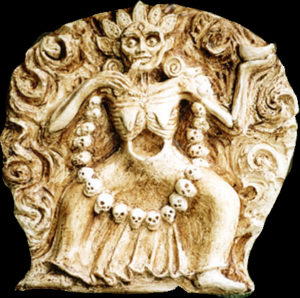Tantric Subtle Bodies – I
As a spin-off from the last couple of posts outlining tantric ritual procedures, I thought I’d turn to a more complex issue and tackle the concept of the ‘subtle body’ and how it is used in tantric practice. The term ‘subtle body’ is immediately familiar of course – it has a long history of usage in Western esotericism, from Aristotle to Aleister Crowley and beyond. Sanskrit terms such as lingaśarīra, sūkṣmadeha or sūkṣmaśarīra– often used to refer to the subtle body – was popularized in Western esotericism by the writings of H.P. Blavatsky and other Theosophists, drawing heavily on the work of Henry Thomas Colebrooke and Max Muller. André Padoux points out that this conflation of terms is a misnomer, as the sūkṣmadeha or sūkṣmaśarīra, in actuality, refers to that entity that migrates from body to body after death and lacks any shape, visualized components or affective qualities.
Continue reading »

